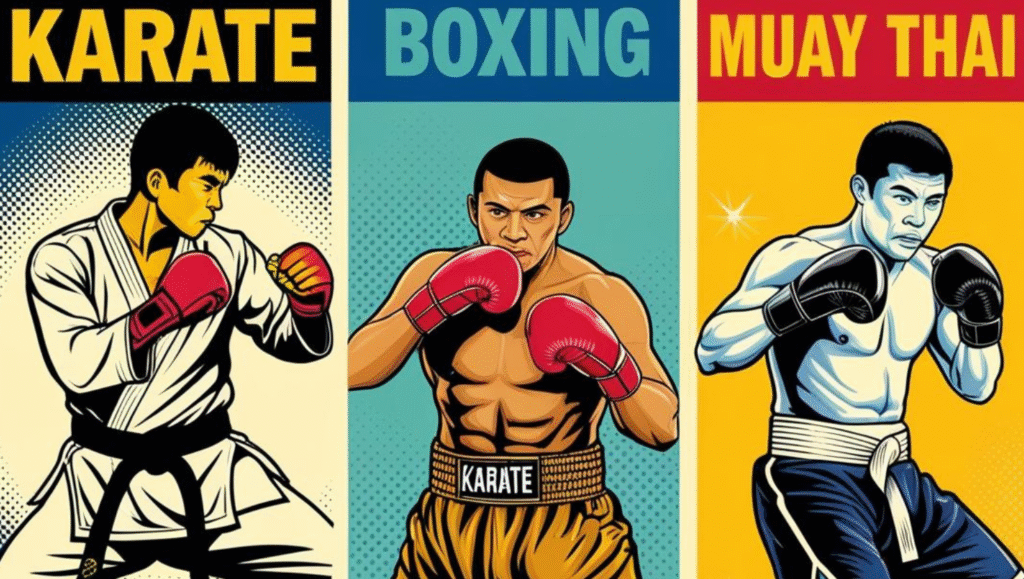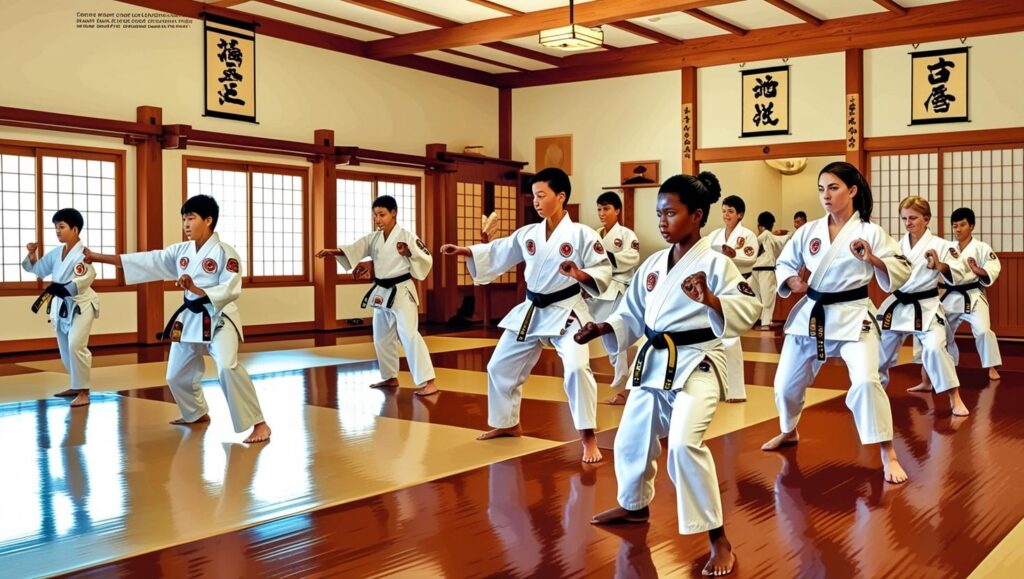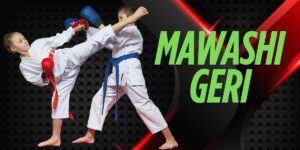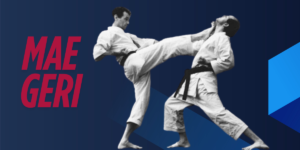Have you ever wondered if the karate you see in movies or practice in the dojo would hold up in a street fight?
You’re not alone! It’s a question many martial artists and self-defense enthusiasts ask themselves.
Karate, with its powerful strikes, straight punches and kicks, and thousand years old heritage, is often associated with discipline and controlled fighting.
But can karate still be practical when the situation shifts from an organized practice to the chaotic unpredictability of a street fight?
In this article, I’m diving deep into whether karate can be helpful in real-world street fighting situations.
I’ll show you how this ancient self-defense technique can be more than helpful in a street fight by breaking down the strengths and limitations of this martial art, comparing its effectiveness to other styles and offering some insights on how it can be applied for self-defense.
So, if you’ve ever questioned whether karate can work in a real fight, keep reading!
Understanding Karate and Its Origins
What Is Karate?
Karate is a traditional Japanese martial art focusing primarily on striking techniques, such as punches, kicks, elbows, and knee strikes.
The word “karate” itself means “empty hand,” referring to the fact that karate practitioners do not typically use weapons in combat (although some forms do incorporate weapons in their training).
Initially developed in Okinawa, karate was influenced by native Okinawan martial arts as well as Chinese martial arts.
Over the years, karate has evolved into various styles, each with its unique training and fighting approach.
While its traditional roots remain strong, many people practice karate for self-defense, fitness, or sport today.
Karate’s key aspects are Kata (pre-arranged forms or patterns), kumite (sparring), and kihon (basic techniques).
In a dojo, students often practice Kata to improve their techniques. Still, in a street fight, it’s more about how well those techniques can be applied in unpredictable and high-pressure situations.
Different Styles of Karate
At present, more than 16 different styles of karate are practiced worldwide.
Among these, five major styles are the most practiced. I will briefly summarize these styles to help you understand which will be the best fit for self-defense.
Shotokan Karate: A Powerhouse of Precision
Shotokan is one of the most widely practiced styles of karate, known for its deep stances and powerful strikes.
It was developed by Gichin Funakoshi in the early 20th century, focusing on strength, precision, and control.
Shotokan practitioners spend a lot of time perfecting their basic techniques, which makes them strong in delivering direct, forceful punches and kicks.
Many believe that Shotokan only works on sparring or displaying Kata, But it is far from reality.
Shotokan’s lower stance and powerful stances give shotokan karatekas an absolute advantage over the opponents.
Its combos, combined with speed and precision, are powerful and effective and can be used in any uncertain situation to defend oneself.
Kyokushin Karate: Tough and Ready for Combat
Kyokushin karate is known for its focus on full-contact sparring and hard training.
This style emphasizes endurance, strength, and the ability to take a hit, making it one of the most physically demanding karate styles.
Kyokushin practitioners are trained to withstand pain, which means they’re often more prepared for the intensity of a street fight.
Regarding effectiveness, Kyokushin has an edge over other karate styles in street fighting because of its emphasis on real combat and its approach to dealing with aggressive opponents.
The powerful, close-range striking techniques are instrumental, and the conditioning that comes with Kyokushin makes you more resistant to physical damage, something crucial in a street encounter.
Goju-Ryu Karate: A Balance of Hard and Soft
Goju-Ryu karate uniquely combines complex techniques (punches and kicks) with softer movements (such as circular blocks and joint locks).
Goju-Ryu’s defensive techniques, such as joint locks and throws, can be very effective if faced with an opponent who tries to grab or control you.
However, its emphasis on close combat and joint manipulation means you might be disadvantaged if the fight moves to the ground, as Goju-Ryu doesn’t focus as heavily on grappling.
For Further Reading:
Which Karate Style Is Right for You? A Beginner’s Guide to 5 Major Styles
"The goal of martial arts is to affect the mind and spirit, not just the body."
Which Style Is Best for Street Fighting?
When it comes to street fighting, the best style of karate depends on the situation and how well you can apply the techniques under pressure.
Shotokan offers powerful striking but may be too rigid for real-world chaos. Kyokushin gives you a robust foundation for full-contact combat.
Goju-Ryu balances hard and soft techniques that might help in more unpredictable situations.
Each style has its strengths, and choosing the best one depends on what you value most in self-defense—powerful strikes, endurance, or versatility in defense.
Is Karate Effective in Street Fights?

The Strengths of Karate in a Street Fight
Karate does have some notable strengths when it comes to real-world street fighting situations. Here are a few of the key advantages:
Powerful Strikes:
Karate techniques, like front kicks (mae geri), roundhouse kicks (mawashi geri), and back fist punches (Kraken), are designed to be fast and forceful.
Karate strikes are targeted mainly towards the Head, Solarplex, Abdomain, growth and legs. Karate blows are lethal and enough to neutralize any opponent.
Discipline and Focus:
Karate trains the mind and body, emphasizing mental resilience, focus, and calmness under pressure.
This disciplined mindset can help you stay calm in a street fight, make better decisions and avoid panic.
Distance Management:
Karate teaches practitioners Tai Sabaki (体捌き). English translation of this word is “Creating angles and body movements.”
This technique is beneficial for controlling space and maintaining the proper distance between themselves and opponents.
Limitations of Karate in Street Fights
While karate has its strengths, it also has some limitations in a street fight. Here are some of the drawbacks:
Lack of Real-World Sparring Experience:
- Traditional karate training focuses heavily on kata (pre-arranged forms) and kihon (basic techniques), which are essential but don’t fully prepare you for the unpredictable nature of a street fight.
- There’s no time to follow a form or routine in real fights, and things can get chaotic quickly.
Limited Ground Fighting Skills:
- Karate mainly focuses on standing techniques and doesn’t emphasize grappling or ground fighting.
- Many street fights end up on the ground. Without training in grappling arts like Brazilian Jiu-Jitsu, you may struggle if the fight moves to that level.
Rules in Training vs. No Rules in Street Fights:
- In tournaments, karate sparring often has strict rules (no strikes to the face, no groin shots, etc.), which might limit your ability to fight dirty when needed in a street fight.
- In a real street fight, breaking these rules (e.g., punching to the face, kneeing the groin) can give you a significant advantage. Still, traditional karate training doesn’t always prepare you for that.
Comparing Karate with Other Martial Arts for Street Fights

When considering the best martial art for a street fight, comparing karate with other popular styles is helpful.
Let’s look at how karate stacks up against other common martial arts, like boxing, Brazilian Jiu-Jitsu (BJJ), and Muay Thai.
Karate vs. Boxing
Striking Power:
- Both karate and boxing emphasize powerful punches, but boxing focuses more on speed and accuracy.
- Karate may offer more striking variety (punches, kicks, elbows). Still, boxing delivers quick, devastating blows with excellent head movement and footwork.
Footwork:
- Boxing has superior footwork, which helps boxers close the gap quickly or evade strikes. In contrast, karate’s footwork focuses more on maintaining stances and balance, making it harder to rush or adapt during a street fight.
Defensive Techniques:
- Boxing excels at head movement and blocking punches, while karate focuses on striking first and controlling distance.
- In a street fight, the ability to evade strikes quickly (as boxing teaches) can be a huge advantage.
Karate vs. Brazilian Jiu-Jitsu (BJJ)
Ground Fighting:
- Brazilian Jiu-Jitsu is the go-to martial art for ground combat. It focuses on submissions, joint locks, and leverage, which can give an advantage if the fight ends on the ground.
- Karate does not specialize in ground fighting. Suppose a street fight takes you to the ground. In that case, a karate practitioner may struggle to defend themselves or regain control unless they have cross-trained in another martial art.
Control and Submissions:
- BJJ practitioners are skilled at controlling an opponent, even from the bottom position, and can easily transition from a defensive position to a dominant one.
- Karate focuses more on neutralizing an opponent with fast, powerful strikes, which may not be enough if the fight goes to the ground.
Karate vs. Muay Thai
Striking Techniques:
- Muay Thai is known as the “Art of Eight Limbs” because it uses punches, kicks, elbows, and knees—all trained for maximum power in close-quarters combat.
- Karate uses similar strikes, but Muay Thai specializes in clinch fighting and elbow/knee strikes at close range, which can be more effective in street fighting when opponents are right on top of you.
Clinch Work:
- The Muay Thai clinch allows practitioners to control their opponent’s posture, strike with knees, or set up throws. This can be a game-changer in a street fight, especially if your opponent tries to grab you or close the distance.
- Karate does not emphasize the clinch, making it less effective when the fight goes into close range.
Endurance and Toughness:
Muay Thai training includes high-intensity conditioning, emphasizing endurance and toughness, preparing fighters for sustained combat. Karate’s training is intense but generally less focused on long, grueling battles, so it may not match the physical toughness of a Muay Thai fighter in a street fight.
Practical Application of Karate in Street Fights
While understanding the strengths and limitations of karate in a street fight is helpful, it’s also important to consider how you can apply karate in a real-world self-defense situation. Here are a few ways karate can help protect yourself on the streets.
How Karate Can Be Used for Self-Defense
Quick, Powerful Strikes:
- You won’t have time to think too much in a street fight. Karate’s emphasis on powerful, quick strikes gives you an advantage. Techniques like front kicks to the abdomen, or roundhouse kicks to the head can incapacitate an attacker, allowing you to escape the situation.
Target Vulnerable Areas:
- Karate teaches you to strike specific vulnerable points on the body, such as the solar plexus, throat, eyes, and groin. These areas are sensitive and can cause a lot of pain or incapacitate someone temporarily, giving you the chance to get away or further defend yourself.
Maintain Distance:
- Karate teaches Tai Sabaki (体捌き), which means controlling distance by body movement. Also, Using techniques like side steps and back kicks, you can create space between you and your attacker, making it more difficult for them to get in range for a strike or grab.
Mental Toughness:
- One of the core teachings of karate is developing mental discipline and resilience. This can be invaluable in a street fight, as you will be less likely to panic. The calm mindset taught in karate can help you assess the situation and respond in a controlled way.
Are Karate Schools Preparing Students for Real Fights?

- Traditional Karate vs. Street Fighting: Many traditional karate dojos focus on kata and kihon (basic forms and techniques). While these are essential for developing proper technique and muscle memory, they don’t always prepare students for the chaos of an actual street altercation.
- Adapting Karate Training: Some schools have adapted their training to be more practical by incorporating full-contact sparring and self-defense scenarios into their curriculum. This type of training better simulates the unpredictability of street fights.
- Cross-Training: Suppose you’re serious about using karate for self-defense. In that case, it may also be helpful to cross-train in other martial arts like Brazilian Jiu-Jitsu for ground fighting or Muay Thai for clinch work. This will make you more versatile and prepared for various situations that may arise in a street altercation.
Frequently Asked Questions (FAQ)
Is Shotokan Karate Effective in a Street Fight?
Shotokan karate can be practical in a street fight. Still, it largely depends on the practitioner’s ability to adapt the techniques learned in the dojo to real-world situations. Shotokan emphasizes powerful strikes, which can be helpful if you land a good hit. However, because it is known for its emphasis on form and stances, it might not be as versatile in the chaotic nature of street fights. If you’re using Shotokan for self-defense, practicing full-contact sparring and incorporating self-defense techniques can improve your chances of success.
Does Karate Work in a Street Fight?
Yes! Karate can work in a street fight, but it has limitations. Focusing on strong strikes and discipline gives you the tools to defend yourself. Still, it might not prepare you for the unpredictability of street fighting. Karate’s techniques, if properly applied, can incapacitate an opponent. Still, you’ll need to adapt to the lack of rules and the possibility of the fight going to the ground. Combining karate with training in other martial arts, like Brazilian Jiu-Jitsu for grappling, can improve your overall self-defense capabilities.
Is Karate Good for Self-Defense?
Karate can be a solid choice for self-defense. It teaches you how to protect yourself using effective strikes and defensive techniques.
Final Thoughts
Is karate practical in a street fight? The answer is that it can be, but it depends on several factors.
Karate offers a solid foundation of powerful linear strikes, mental discipline, and distance management, all of which can help you defend yourself in real-world situations.
However, limitations—such as a lack of ground fighting techniques and the structured nature of traditional karate training—may make it less effective in some street fight scenarios.
Ultimately, karate is a great starting point, but being adaptable and continuously improving your self-defense skills is key to handling any situation.
You Might Also Like











Pingback: Can UFC Fighters Smoke Weed in 2024? Latest Rules and Updates - Fighters Wisdom-Martial Art Insights